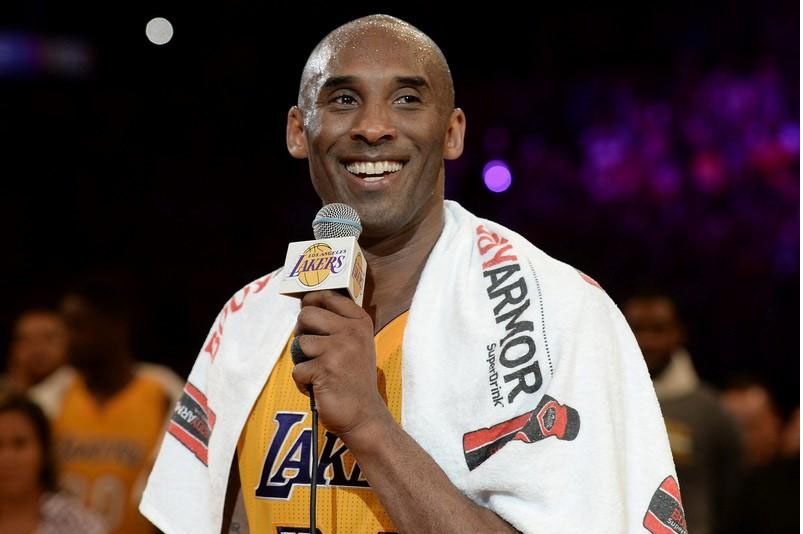(Reuters) – The pilot of Kobe Bryant’s ill-fated helicopter was flying too low to be monitored in fog, audio records of conversations with air traffic controllers show.
The fog, and how the pilot and air traffic controllers reacted to it, came under scrutiny yesterday, as fans, friends and family of the NBA superstar confronted the reality that the charismatic 41-year-old and his 13-year-old daughter were among the nine people on board who died.
The Sikorsky S-76 chopper slammed into a steep hillside outside the town of Calabasas, California, about 40 miles (65 km) northwest of downtown Los Angeles, igniting a brush fire and spreading debris over a quarter-acre (1,000 square meters) of grassy terrain.
Bryant, who won five NBA championships in his 20 years with the Los Angeles Lakers, was known since his playing days to travel frequently by helicopter to avoid the Los Angeles area’s glacial traffic.
In addition to the Bryants, the crash devastated three other families linked to the Mamba Sports Academy on their way to a girls’ basketball tournament: a husband and wife with their 13-year-old daughter; a mother and her 13-year-old daughter; and a basketball coach who was also a mom.
The ninth victim was the pilot, Ara Zobayan, an experienced former flight instructor who was instrument-rated, or qualified to fly in fog, according to multiple U.S. media accounts.
Witnesses recounted thick fog over the foothills where the helicopter went down. The fog was so bad that both the Los Angeles Police Department and Los Angeles County Sheriff’s Department grounded their helicopter fleets, the Los Angeles Times reported, citing officials.
Air traffic controllers gave the pilot “Special Visual Flight Rules,” or clearance to fly in less than optimal weather around the Burbank airport.
A Federal Aviation Administration (FAA) official noted a pilot “does not get a general, or blanket, clearance from the FAA to fly in these conditions. A pilot is responsible for determining whether it is safe to fly in current and expected conditions.”
Moreover, the pilot apparently requested “flight following,” or constant tracking from controllers, but was informed he was flying too low to be picked up by air traffic control radar. It is unclear if the helicopter pilot heard the comment as it comes near the end of the doomed flight.
“Two echo x-ray, you’re still too low level for flight following at this time,” an air traffic controller told the pilot, according to publicly available audio of the conversation that was posted by several aviation websites.
The FAA and the National Transportation Safety Board are investigating the crash. The NTSB has a team of about 20 on scene and investigators were at the site yesterday going through the wreckage. The team is expected to be on site for a few more days, NTSB spokesman Keith Holloway said. The agency plans a news conference at 4 pm PST (0000 GMT).
The radio traffic audio indicates the pilot wanted to remain below the clouds in order to remain in visual contact with the ground and avoid flying on instruments, said Gary Robb, an aviation lawyer and author of the book “Helicopter Crash Litigation.”
Robb said it was “certainly possible” that the pilot was “flying so low to get under the cloud cover that he clipped the top of that mountain that extended into the clouds.”
“The dialogue between the pilot and air traffic control leads me to believe … he kept wanting to go lower and lower, beneath the fog and ceiling, as we call it, and that could have led him to fly so low that he flew into the mountain,” Robb said.
The pilot, in his transmissions, “was calm and controlled the whole time,” Robb said, calling the communications “extremely normal and routine.”
Robb stressed that investigators also would have to consider mechanical failure, though he described the Sikorsky twin-engine turbo helicopter as a “reliable” and “generally safe” aircraft.
FANS IN MOURNING
The mourning continued a day after Bryant’s death. After Lakers fans spontaneously built a shrine to Bryant near the Staples Center where he played his home games, fans laid down flowers and Bryant jerseys at Lower Merion High School outside Philadelphia, where Bryant played before going to the NBA.
In New York, early morning commuters emerging from Penn Station stopped for a silent moment before an enormous electronic billboard lit up with Bryant’s image outside Madison Square Garden.
Below ground, a sign marking the Bryant Park subway station near the New York Public Library was altered by a fan armed with masking tape to read “Kobe Bryant Park.” The park is named after 19th Century poet William Cullen Bryant.
The image, spread quickly on social media, drawing throngs of curiosity seekers taking selfies.









